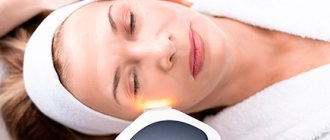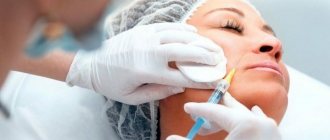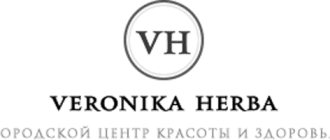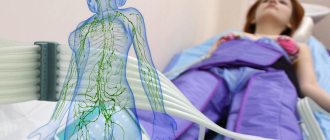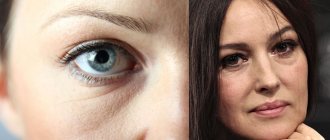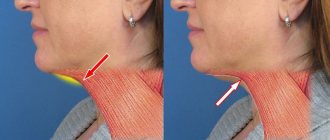For Kosmetic International magazine
Anna Smirnova,
dermatovenerologist, dermatocosmetologist
International Medical (The Platinental Aesthetic Lounge Moscow)
“Everything is poison, and nothing is without poison; The dose alone makes poison a medicine." Paracelsus, 16th century
The first mentions of ozone therapy date back to the end of the 18th century. The Dutch physicist M. van Marum, while researching electricity, discovered that when sparks appear in an electric machine, the oxidizing properties of the air change and a strange smell arises. In 1840, the German chemist Christian Friedrich Schönbein was able to compare previously conducted scientific research and came to the conclusion that a new gas had been discovered. It was he who named this gas ozone, which translated from Greek means “smell.”
For the first time, ozone as an antiseptic was used in Germany back in 1915 during the First World War, but extensive and systematic research in the field of ozone therapy began only in the mid-70s of the last century, when ozone-resistant polymer materials appeared in everyday medical practice and easy-to-use ozonation units. In subsequent years, information gradually accumulated about the successful use of ozone in the treatment of various diseases. However, for a long time, ozone therapy methods associated with direct contact of gas with the outer surface and various body cavities were mainly used when treating purulent wounds, trophic ulcers, abscesses, etc.
In Russia, little was known about the therapeutic use of ozone. Only in the 60-70s, several works on the use of ozone in the treatment of certain skin diseases appeared in the domestic literature, but since the 80s this method has become increasingly widespread. By 2000, the Russian school of ozone therapy had finally formed its own, different from the European, approach to the use of ozone as a therapeutic agent. The main differences are the widespread use of saline as an ozone carrier and the use of significantly lower concentrations and doses of ozone. The desire of most Russian doctors to use the lowest effective concentrations of ozone reflects the basic principle of medicine - “do no harm.”
How does ozone affect the skin?
Ozone therapy in cosmetology is used quite widely, including as an effective method of skin rejuvenation. In therapeutic techniques based on the use of active oxygen, utmost attention is paid to the following aspects216:
- increasing skin immunity;
- providing cells with energy and oxygen;
- improvement of microcirculation processes.
Ozone is a unique agent that eliminates skin defects, stimulating its natural functions and capabilities. It helps eliminate fungi, viruses, bacteria, and also has immunomodulatory and detoxifying properties.216
Ozone therapy for the face is often used to combat acne. Active oxygen improves the condition of the hydrolipid mantle, strengthens skin immunity and increases its protective functions. It also helps improve skin firmness and texture by stimulating collagen and elastin production.216
What does ozone therapy do and how does it work?
The skin often lacks oxygen and moisture. Because of this, it becomes dry, sluggish, the sebaceous glands work overtime, which leads to the formation of blackheads and pimples. Cellular metabolism is disrupted, renewal slows down, and toxic substances are retained. But healthy, tight and elastic skin allows a woman to look attractive, and vice versa, flabby and dry skin, with many wrinkles, automatically adds a couple of years!
It has been proven that ozone, due to its biological composition, quickly and effectively fights premature skin aging, and also solves a number of dermatological and aesthetic problems. It stimulates intensive division of epidermal cells, thereby providing a powerful rejuvenating effect. In addition, the introduction of ozone smoothes wrinkles and stimulates collagen production.
Ozone therapy: the benefits of the procedure in the treatment of acne
When treating problem skin, local ozone therapy is often used. To deliver active oxygen to the subcutaneous layer, injection techniques or a mesoscooter are used. The depth of drug administration and dosage is determined individually. The use of ozone-oxygen mixture for the treatment of acne allows216:
- soften infiltrates;
- reduce the amount of purulent contents;
- reduce redness and swelling in the area of inflammatory elements;
- accelerate metabolic processes in skin cells;
- stimulate regeneration and tissue rejuvenation;
- eliminate age spots;
- improve skin texture.
Regardless of the causes of acne on the face, the first changes are usually noticeable after 2-3 procedures. The full course of treatment consists of 4-6 sessions, which are carried out every 5 days. Some patients require longer courses (up to 10-15 procedures).216
As a rule, the complex consists of 4-6 procedures, which are carried out every 5 days. But up to 15 sessions may be required. Local anesthetics are commonly used to reduce the discomfort associated with injecting the drug under the skin.216
pros
Ozone therapy for the face and body has a number of benefits, including:
- Efficiency. The first results are observed after 1–3 procedures. The effect reaches its maximum towards the end of the course.
- Persistence. Depending on age, severity of the problem and skin condition, the effect lasts from 6 months to a year.
- Painless. Thanks to the treatment with analgesics, ozone therapy does not cause discomfort.
- Safety. Ozone is well tolerated by the body and causes virtually no adverse reactions. No recovery period is required.
- Versatility. The method has no age or gender restrictions and is suitable for most people. However, ozone therapy is most in demand among young and middle-aged women.
- Compatibility with contour plastic surgery, hardware and manual procedures: myostimulation, lymphatic drainage, electrolipolysis, various types of massage. These techniques make the results of injections more lasting and noticeable.
- Availability. The method is much cheaper than plastic surgery and contouring.
Ozone therapy for the face: indications and contraindications
Ozone has the ability to increase tone and improve skin texture, eliminate age spots. Procedures based on the use of ozone-oxygen cocktails are indicated for the following problems216:
- excessive oily skin;
- enlarged pores;
- comedones, acne;
- post-inflammatory pigmentation, as well as other manifestations of post-acne;
- rosacea;
- Rosacea.
Before starting a course of treatment for skin diseases with ozone, you should consult your doctor. Injection ozone therapy is a serious procedure that has contraindications:
- convulsions;
- epilepsy;
- blood coagulation disorders (including those associated with taking certain medications);
- nervous system disorders;
- menstruation;
- hyperthyroidism (increased secretion of thyroid hormones);
- oncological diseases;
- deficiency of platelets in the blood;
- diabetes.
Treatment of acne on the face using ozone therapy is not carried out if there is an individual intolerance to medical ozone.216
Indications: what problems does ozone therapy solve?
In cosmetology, ozone therapy of the face and body is actively used for:
- prevention of aging: moisturizing the dermis and saturating it with oxygen;
- rejuvenation and correction of age-related changes: skin tightening, smoothing fine and facial wrinkles;
- correction of the oval of the face, restoration of its contours;
- improve color, even out facial tone;
- eliminating dark circles and bags under the eyes;
- eliminating sensitivity, dryness, oiliness or swelling of the skin;
- narrowing enlarged pores;
- solutions to skin problems: blackheads, pimples, comedones, acne;
- treatment of post-acne, stretch marks, age spots, rosacea, rosacea (spider veins and spider veins);
- eliminating double chin and reducing the fullness of the cheeks;
- fight cellulite, fat deposits and excess weight;
- correction of the figure, shape and volume of the breasts and body;
- increasing skin tone, giving it elasticity;
- preparation for peeling, contouring, hardware procedures;
- restoration of the epidermis after peeling.
Ozone therapy is also indicated for factors that are negative for the skin: vitamin deficiency, smoking, oxygen starvation, metabolic disorders, stress, chronic fatigue and diseases of the nervous system.
Rehabilitation after acne** treatment with ozone
The result of the procedure depends not only on the professionalism of the doctor or cosmetologist, but also on the patient. Typically, recovery after ozone therapy takes about 2 days, but during this period it is important to follow medical recommendations216:
- the treated areas should not be touched with hands;
- in the first days you need to completely stop using cosmetics;
- Until the skin is completely restored, avoid visiting the solarium, swimming pool, or sauna.
After ozone therapy for acne, it is also necessary to avoid prolonged exposure to the sun until the end of the rehabilitation period.216
Contraindications
The following factors are contraindications to the procedure:
- cardiovascular pathology in the stage of decompensation;
- disorders of the blood coagulation system;
- endocrine pathology;
- epilepsy.
The time limit for the procedure is menstruation.
The advantages of the procedure are high efficiency, noticeable effect after the first procedures. In addition, ozone therapy is the method of choice when it is impossible to carry out photodynamic therapy or mesotherapy due to the development of allergic reactions.
Result of the procedure: before and after photos
Features of injection ozone therapy
Another name for the procedure is ozone mesotherapy, ozone injections. It involves introducing an oxygen-ozone gas mixture under the skin using thin needles. One injection includes from 2 to 20 ml of the mixture. The volume depends on the purpose of the procedure. For example, when treating furunculosis, 5-10 ml of the composition is injected under the skin, when correcting wrinkles - 2-5 ml. Injection mesotherapy is suitable for any area of the body, including the face and scalp.
Ozonator in action
The procedure is simple: the gas mixture generated by the ozonizer is injected under the skin with a syringe. The injection area is pre-treated with an antiseptic. During the procedure, small diameter needles are used, so pain is minimal. After the injections, a manual massage of the treated area is performed to evenly distribute the mixture under the skin.
For several hours after the procedure, the patient experiences a slight feeling of skin tension at the injection sites. Some people say they feel air bubbles under their skin. This is a normal phenomenon associated with the penetration of the oxygen-gas mixture into the deep layers of the skin. There are no bruises or swelling left in the treatment areas, everything is very safe and aesthetically pleasing.
Who is ozone therapy recommended for?
Ozone cannot make you 20 years younger or cure all diseases. But the therapy gives excellent results in the complex treatment of vascular pathologies, inflammatory lesions of internal organs, and a number of viral diseases. But we are more interested in the possibilities of ozone in aesthetic medicine. These include:
- Treatment of infectious and inflammatory lesions of the skin of the face and body (acne, dermatitis, rosacea). The gas has a pronounced bactericidal effect.
- Treatment of cellulite. Ozone accelerates the breakdown of fats in subcutaneous tissue, stimulates blood and lymph flow. The therapy is effective even for fibrous cellulite, when the orange peel hardens. For advanced forms, it is recommended to combine therapy with diet and massages.
- Weight correction. Ozone accelerates cellular metabolism and the breakdown of fats. It will help lose weight for those for whom intense exercise is contraindicated for health reasons.
- Treatment of alopecia areata (tufted hair loss). Saturation of the scalp with ozone stimulates blood flow to the follicles. Together with the blood, they receive nutrients that stimulate hair growth and awaken the follicles in areas of baldness.
Ozone therapy is effective in treating cellulite
It is worth noting that for therapeutic purposes it is not pure ozone that is used, but an oxygen-ozone mixture. It is formed in special installations (ozonizers) by passing oxygen through a special chamber. The mixture is used immediately after creation in the apparatus - it is impossible to stock up on it for future use.
A course of ozone treatment always begins with a trial administration of the mixture to assess the patient's response. There is no specific allergy to the gas, but for some people, the introduction of the mixture can become an additional trigger, provoking an allergic reaction to other irritants. The consequences of the trial procedure are assessed within 24 hours.
Can ozone therapy cause harm?
On the Internet you can find conflicting opinions about this procedure. The most frightening thing is that ozone therapy provokes cancer, which is why it is prohibited in all countries except the Russian Federation. In fact, the procedure is not officially prohibited anywhere, and in many countries of the world, including Germany, Switzerland and Spain, there are associations of practicing ozone therapists. As for oncology, there is not a single study proving a direct relationship between ozone injections and the occurrence of malignant tumors.
Before a course of ozone therapy, it is advisable to undergo a full medical examination to exclude possible complications.
Possible complications and harm of ozone therapy
If the procedure is carried out by a qualified doctor in a specialized institution and modern equipment is used, then ozone therapy will not cause complications or harm to the body. During the procedure there should not be any strong discomfort. Loss of consciousness, dizziness or vomiting indicates that the procedure needs to be stopped and a more detailed examination performed.
During consultations, it is important to tell the doctor about all allergic reactions, if any, past infectious diseases, and current use of any medications. However, it cannot be ruled out that in particularly sensitive patients the natural microflora may be disrupted. This happens extremely rarely and is caused by the body's individual intolerance to ozone. In this case, a disturbance in well-being is observed after or even during the first procedure.
How is the procedure performed?
When performing this cosmetic procedure, the facial skin is cleaned of impurities and the surface of the skin is treated with liquid nitrogen. To do this, use a special wooden stick on which a cotton swab is wrapped. It is placed in a container with nitrogen and massaged over the entire face.
This manipulation can only be entrusted to a true professional. The specialist must carry out this procedure as carefully as possible, carefully avoiding the area under the eyes and near the lips. Depending on the purpose of the manipulation, its duration ranges from 10 to 20 minutes. Cryomassage involves a light massage with nitrogen; it is never rubbed into the skin. Some patients feel only a slight burning sensation from the feeling of cold. At the end of the cosmetic procedure, the face is covered with moisturizing cream. You are allowed to go outside after 30-40 minutes.
At the end of the cryomassage, slight redness of the skin may be observed. There is no need to be scared, this is the norm. Literally within a day, this symptom goes away on its own.



